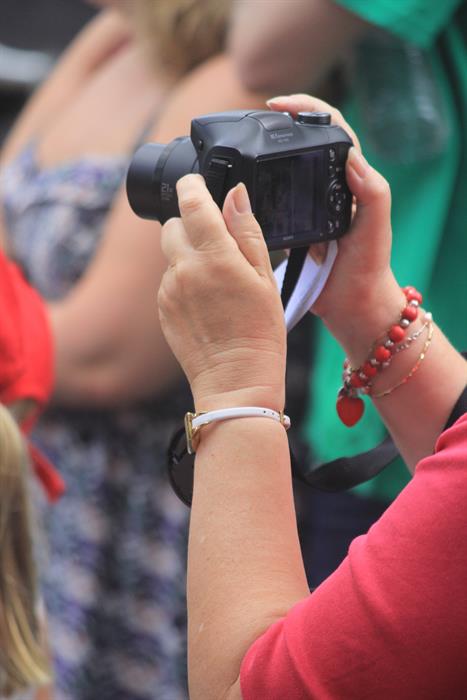Become a better Amateur Photographer

Learn how to capture beautiful images of special occasions in your life
COURSE STRUCTURE
There are 6 lessons in this course:
-
Origins of Photography
-
Image formation
-
how light works in photography
-
lenses
-
understanding photosensitive materials.
-
Understanding Film & Cameras
-
Parts of film: supercoat, emulsion, backing support, anti-halation layer
-
film sensitivity
-
Camera Construction
-
shutter speed
-
f stop
-
ASA/ISO
-
The Camera and it's Use
-
Camera stability
-
ways of reducing camera movement
-
depth of field
-
filters
-
fault finding, etc.
-
More on using a camera
-
Flashes (electronic & manual)
-
flash synchronisation
-
problems with flash photography (eg. red eyes)
-
using a flash in daylight
-
special lenses
-
photo composition.
-
Photographic Techniques
-
Planning a photo session
-
Posing for photos
-
Snapshots
-
Water photography
-
The human form
-
Portraits
-
Animals
-
Action
-
Landscape
-
Still Life photography.
-
Developing your photographic style
Each lesson culminates in an assignment which is submitted to the
school, marked by the school's tutors and returned to you with any
relevant suggestions, comments, and if necessary, extra reading.

AIMS
-
Describe how light forms an image in a camera.
-
Describe how an image can be captured in a camera.
-
Discuss how you can work at improving your capabilities with respect to taking photographs.
-
Take photos under a range of more complex conditions.
-
Improve your technique for taking pictures.
-
Analyse your photographic skills and develop an increased consciousness of your own photographic style
WHAT YOU NEED?
This course can be undertaken successfully without sophisticated
camera equipment; however, you do need the use of a camera. An SLR
camera is best, but any camera will do. Over the time you do the course,
you need to submit photos (either digital images or processed film - in
that case a minimum of 5 rolls of film would need to be shot and
developed.
All photos you take, and written work you submit will be returned to you.
COURSE EXTRACT
RULES OF COMPOSITION
Centre of Interest
You should have a centre of interest in the photograph, which the eye is drawn to; sometimes referred to as a focal point or the subject. The other things in the photo should complement that main point of interest and not compete or overpower it. (eg: a large tree, surrounded by less awesome vegetation, a grand building, surrounded by garden, or by less dominating architecture, a person surrounded by the furniture in a room).
Competing elements
The elements which go to make up the picture should not detract from each other.
Rule of Thirds
An oft quoted commandment, which largely seems to work, the Rule of thirds can be a useful procedure. This is applied as follows...
- Imagine the viewfinder divides the picture into 3 equal sections horizontally and 3 sections vertically – 9 equal sizes rectangles in 3 x 3 formation. There are 2 vertical lines and 2 horizontal lines, intersecting each other at 4 points.
- Place the centre of interest of your scene over one of these 4 intersections.
- Supporting elements should be arranged at other points.
Leading Lines
Draw in the viewer’s eye deeper into a picture to an important subject. Use straight, curved, parallel, or diagonal lines such as roads, rivers, streams, bridges, branches, or fences to lead the attention to key parts of the picture.
Golden Section or Ratio
Similar in concept to the Rule of Thirds but mathematically more intricate. Certain points in a feature’s composition seem to automatically attract the viewer’s attention, this seems to have been understood by the ancient Greeks who used the Golden Ratio in art and architecture; we do not know if this was by calculation or just that it was pleasing to the eye, it continued via the Egyptians, Babylonians, through many artists and architects, including Leonardo da Vinci, Salvador Dali.
Imagine a picture divided into nine parts with four lines; 2 vertical and 2 horizontal – these parts are not all equal. Each line is drawn so that the width of the resulting small side of the rectangle produced relates to that of the rectangle’s long side exactly as the width of the whole image relates to the width of the long side of the created rectangle. Points where the lines intersect are the "golden" points of the picture. The mathematics relating to Golden Ratio are beyond this study but the Golden Ratio spawns relationships in many areas of design and art.
Diagonals
Linear elements, such as roads, waterways, and fences placed diagonally, are generally perceived as more dynamic than horizontally placed ones:
Warm colours dominate
Give due consideration to the power of colour; red objects for instance draw attention more than dull colours. (A red object can appear more prominent and closer than it really is).
Framing
It is often possible to use features to create a frame through which the subject is viewed; it doesn’t have to be an entire frame, it could just be an overhanging branch which fills the top of the picture or the edge of a building along the side of the image. Or, it might be an entire doorway or window. It can add depth and context to a shot and hold your attention towards the true subject. There is a balancing act to be performed to ensure the frame does not overpower the subject; ensure you focus on the main subject, it is a good idea to use a small aperture to achieve a high depth-of-field.
Horizon
If the horizon is placed low on a photo, it creates a feeling of spaciousness. If high in the frame it creates a more confined feeling
Simplicity
Avoid distractions and clutter which take the attention away from the subject. If it’s not necessary for the picture then why not take it out. Subdue things that are not important and make them much less interesting than the important features in the frame.
Texture
The consistency of a surface can be of interest in a picture. Light objects with a distinctive surface in such a way to exaggerate its appearance; this usually means lighting across the surface to emphasise the contours of the pattern with highlight and shadow. Images of strong textures create a desire to touch what's in the picture.
Time
The time of day you take a photo can affect the result dramatically, a sunrise or sunset can be a spectacular event which last just a few moments and creates unexpected exciting lighting effects.
The low angle of sunlight in the very early morning or late afternoon are often (but not always) the best times to find exciting natural lighting. Try to plan and consider where shadows and highlights might be in the location you are taking a photograph. Shadows might be better at one end of the day than at the other. And, always be ready for the unexpected lighting around dawn and dusk, what might appear to be the onset of a spectacular sky can suddenly turn into an anti-climax and sometimes the failing light can give rise to a magnificent final few seconds of daylight.